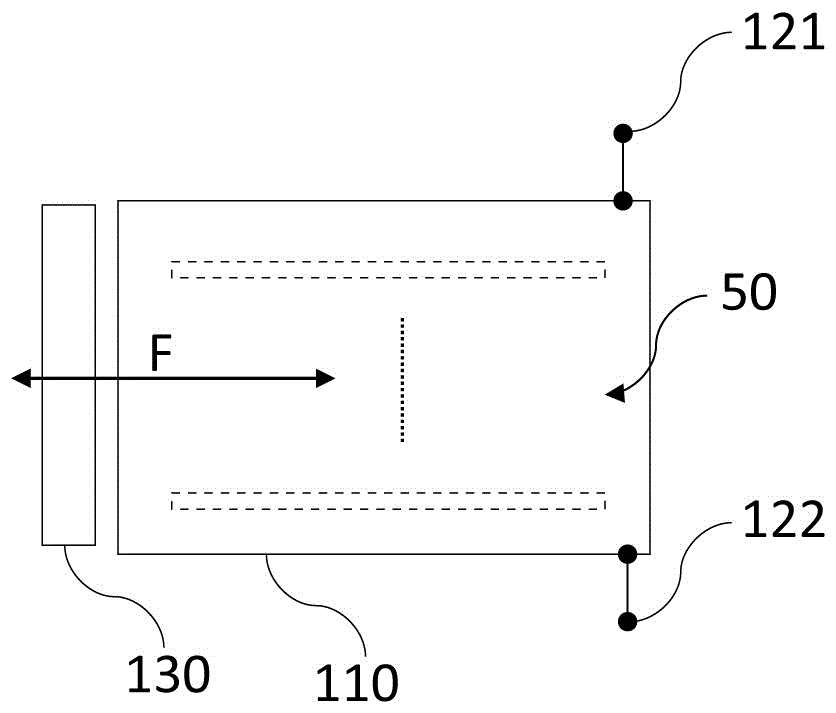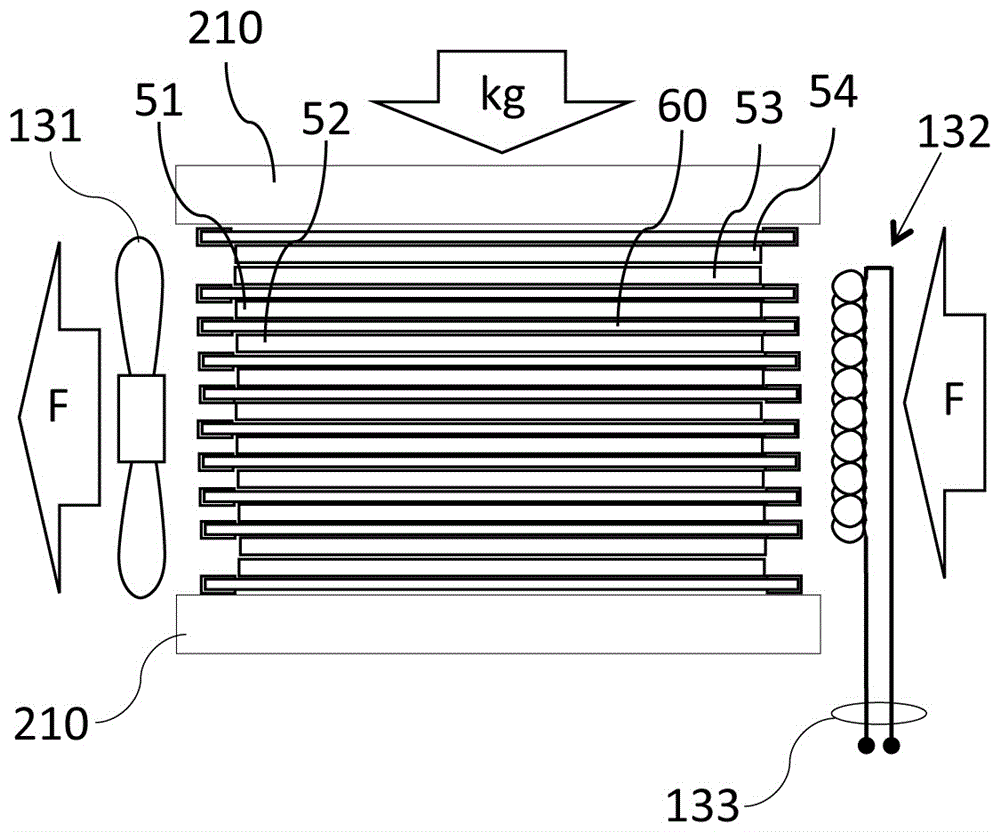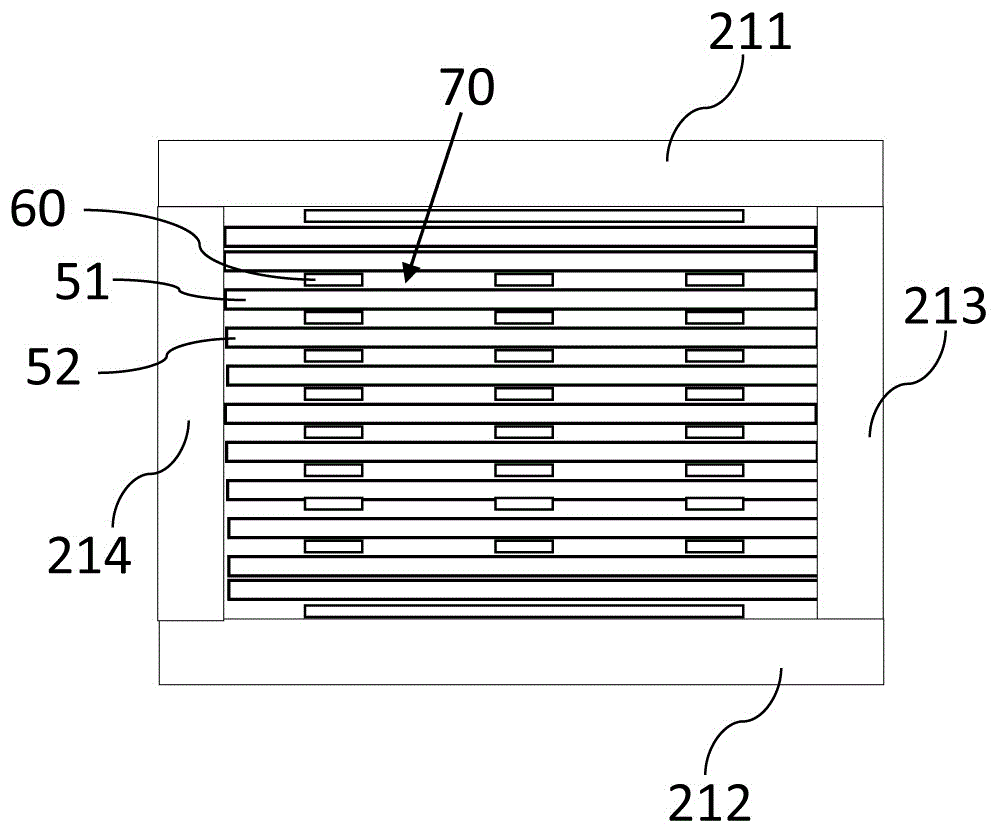Device and method for controlling the temperature of stacked photovoltaic cells
A photovoltaic cell and temperature control technology, applied in photovoltaic power generation, photovoltaic modules, photovoltaic system monitoring and other directions, can solve the problems of large investment, error-prone and expensive, and achieve the effect of high speed, simple contact method and capacity expansion
- Summary
- Abstract
- Description
- Claims
- Application Information
AI Technical Summary
Problems solved by technology
Method used
Image
Examples
Embodiment Construction
[0026] figure 1 Shown is a structural example of the temperature control device, which has the following features: a mounting area 110 for a stacked photovoltaic cell 50; a first and a second power supply interface 121, 122 for connecting the stacked photovoltaic cell 50 to An external power source (not shown) provides current to flow through the stacked photovoltaic cells 50 . In addition, the device has a temperature control unit 130 designed to allow the coolant F to flow through the installation area 110 to control the temperature of the stacked photovoltaic cells 50 in the installation area 110 .
[0027] figure 2 is a structural example of a device with other optional components. In the construction example shown, the temperature control unit 130 comprises a blower 131 and an additional heating device 132, enabling the blower 131 to induce a flow F, for example from the additional heating device 132 to the blower 131 (or vice versa). The additional heating device 132...
PUM
 Login to View More
Login to View More Abstract
Description
Claims
Application Information
 Login to View More
Login to View More - R&D
- Intellectual Property
- Life Sciences
- Materials
- Tech Scout
- Unparalleled Data Quality
- Higher Quality Content
- 60% Fewer Hallucinations
Browse by: Latest US Patents, China's latest patents, Technical Efficacy Thesaurus, Application Domain, Technology Topic, Popular Technical Reports.
© 2025 PatSnap. All rights reserved.Legal|Privacy policy|Modern Slavery Act Transparency Statement|Sitemap|About US| Contact US: help@patsnap.com



